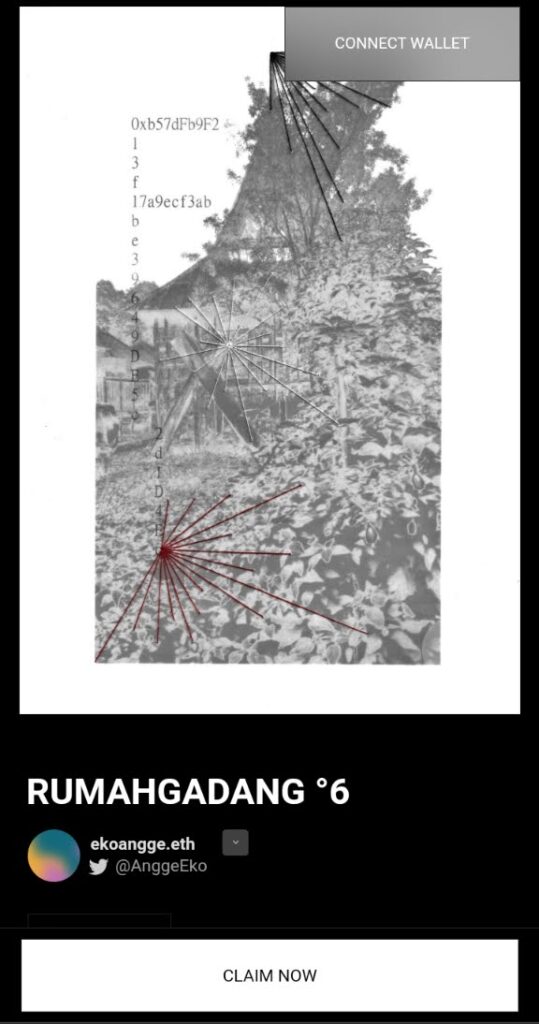
.deformingChief .2022
This project serves as a personal exploration of identity, reconnecting with my cultural traditions and heritage. The idea emerged during the pandemic, when restrictions prevented me from physically returning to my village and my origin. As part of the diaspora, this disconnection inspired me to develop my own narratives, drawing on documentation from previous visits home. Through a multidisciplinary transmedia approach that combines heritage practices with contemporary mediums, I aim to re-engage with and reinterpret these connections.
As a native, my portrayal of the Minangkabau culture explores a heritage expression. “Minangkabau, Echoes of the Mother” is a continuity series of projects interlaced between photography, painting, illustration, and digital arts, depicting the once bustling heritage of my hometown Minangkabau village in Indonesia.
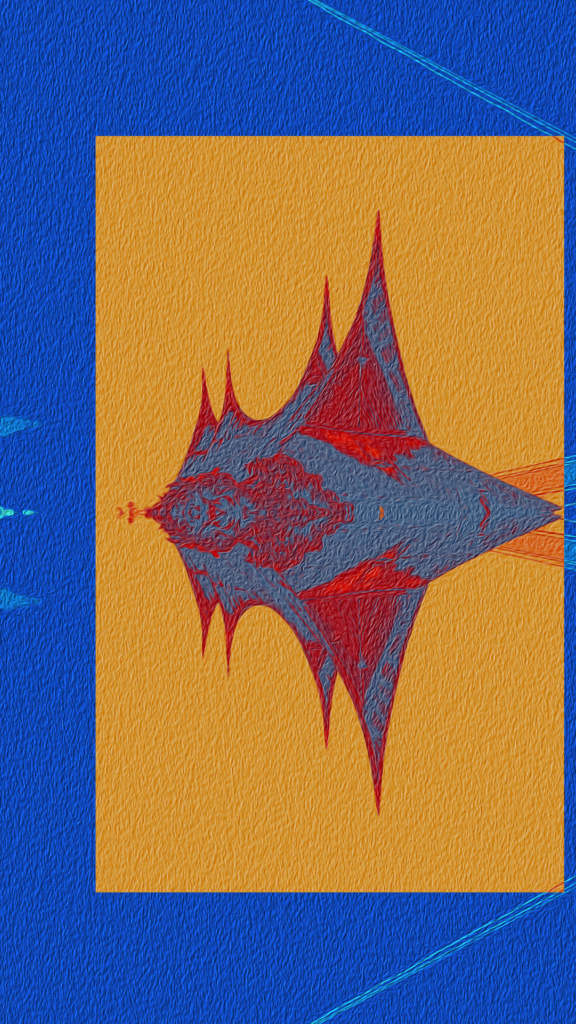
‘The roof of Rumah Gadang‘
Main traditional house character from Minangkabau ethnic
Architecturally, the Minangkabau culture is renowned for their “Rumah Gadang” houses, characterized by their sweeping, horn-shaped roofs, which are said to represent the horns of the buffalo, a symbol deeply ingrained in Minangkabau mythology. These now-abandoned structures once represented unity, familial gatherings, and community life within the Minangkabau ethnic group.
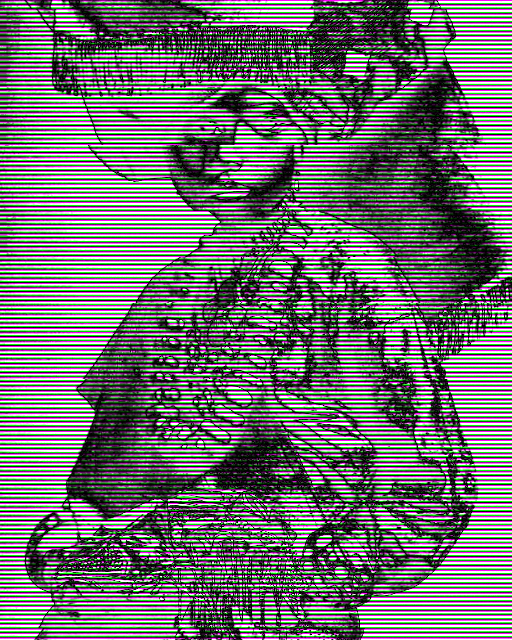
(Glitch on Image)
The Minangkabau culture of West Sumatra, Indonesia, is particularly special. This matrilineal society, one of the largest in the world, is a striking example of a matriarchal culture thriving in a modern society where property and family names are passed down through female lineage, which stands in contrast to the patriarchal norms prevalent in many other societies.
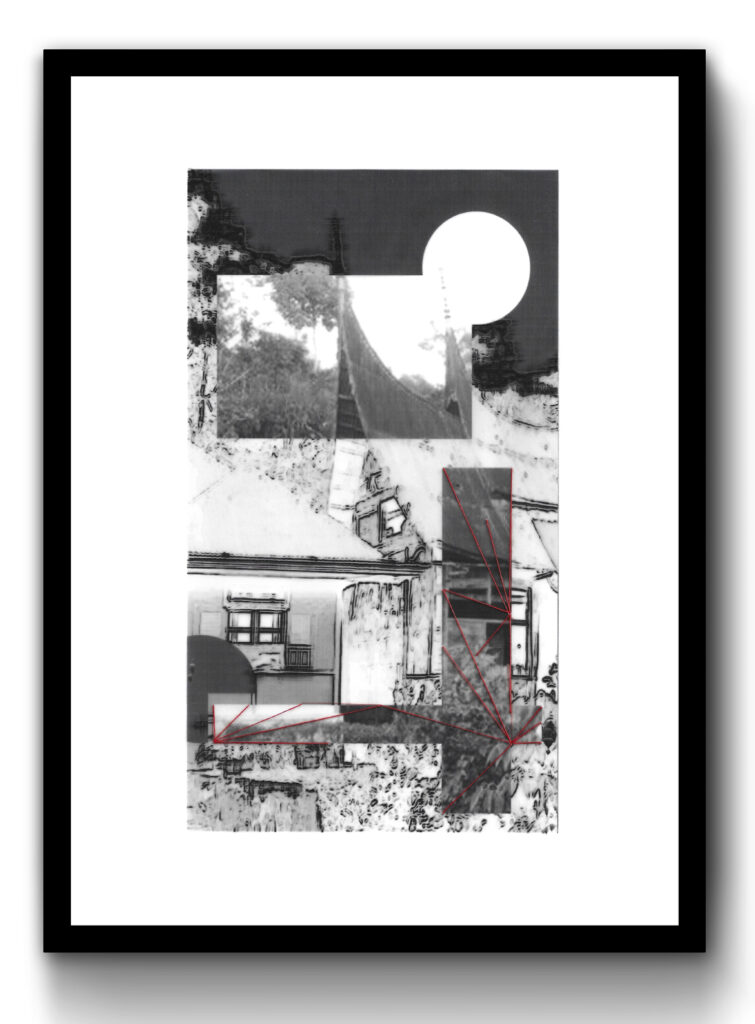
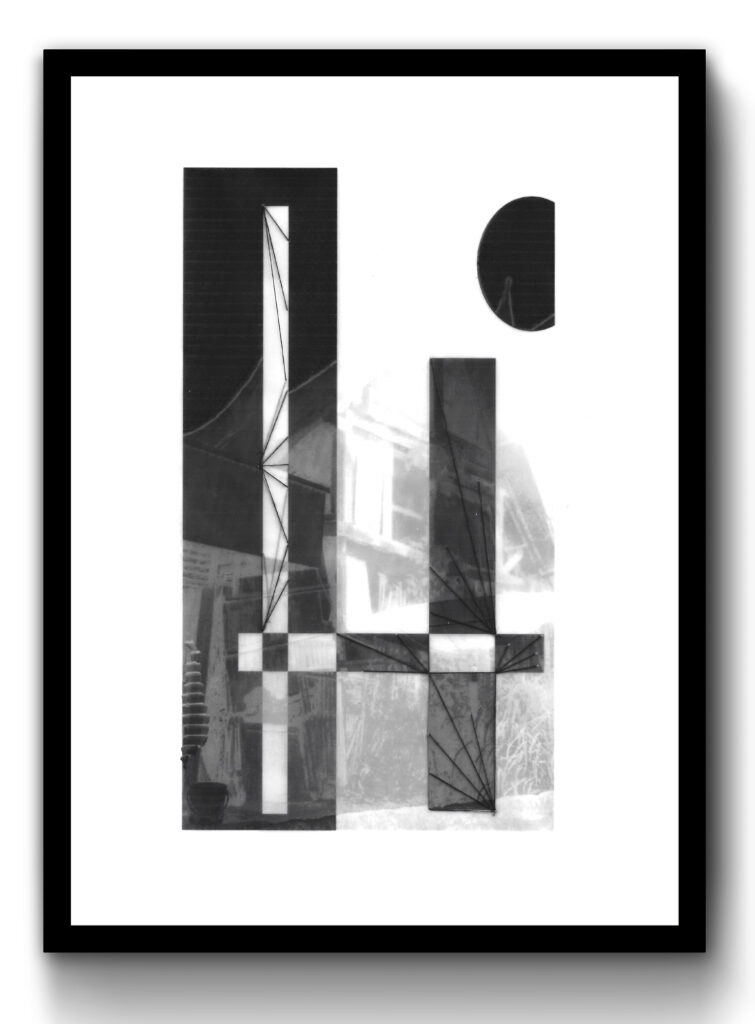
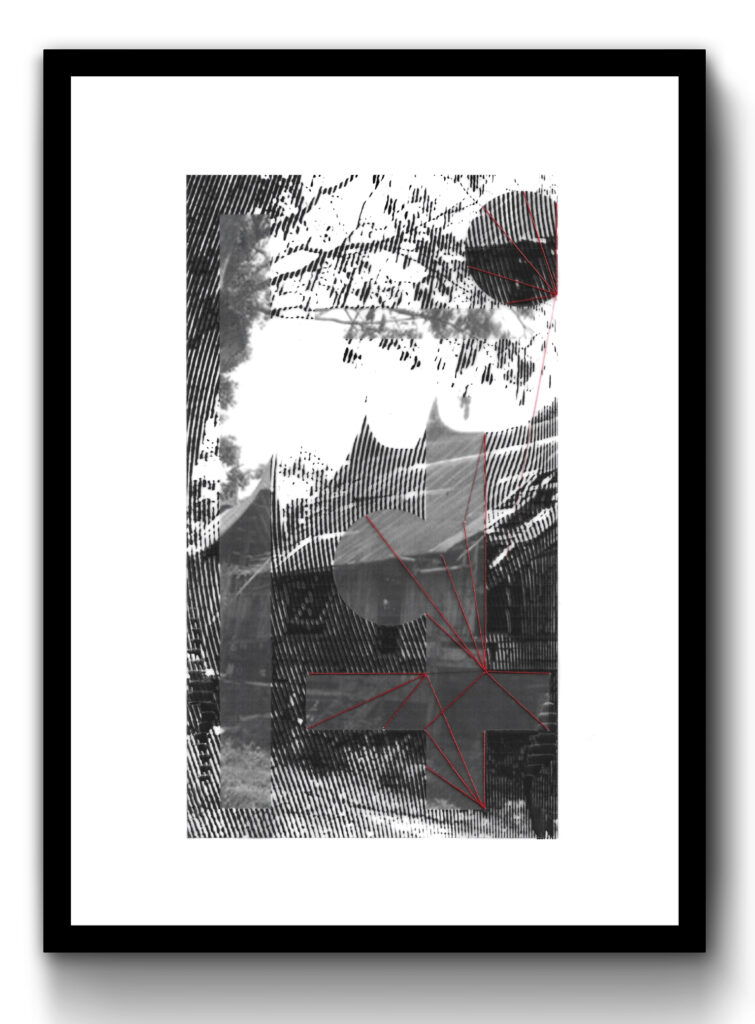
combined embroidery on paper.
Each image captures the unique architectural details emblematic of the Minangkabau ethnicity, with the houses acting as distinct cultural icons. Previously humming as the nerve center of community interactions, these structures stand silent now, their vibrancy distorted through the effects of digital glitches. The series serves as a profound tribute to the leaders of the past, their influence immortalised in these enduring architectural testaments, echoing the ebb and flow of cultural progression.
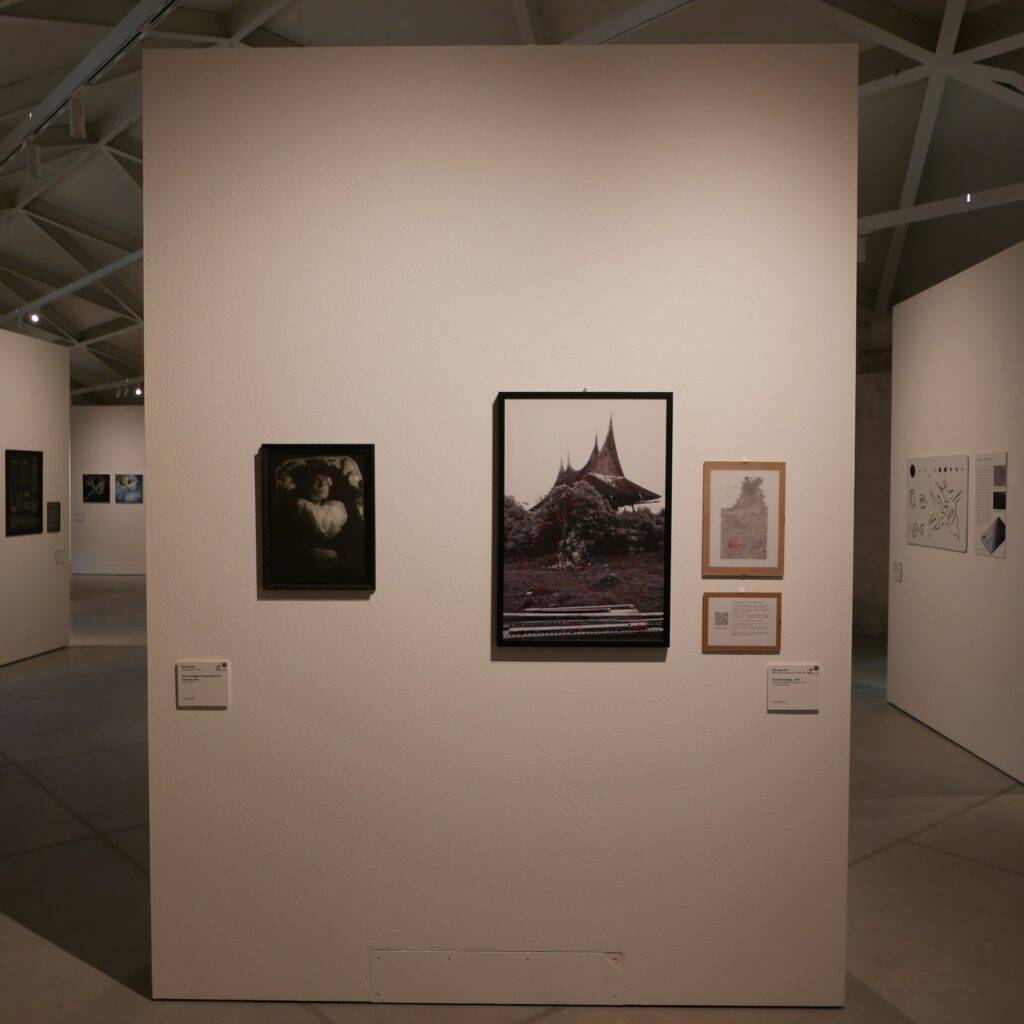
UKIRAN GADANG
A remarkable array of graphics that echo the intricate architectural reliefs and distinctive symbols of Minangkabau ethnic houses in Indonesia. Each piece in this collection captures the essence of the Minangkabau culture, presenting a vivid exploration of the cultural heritage.
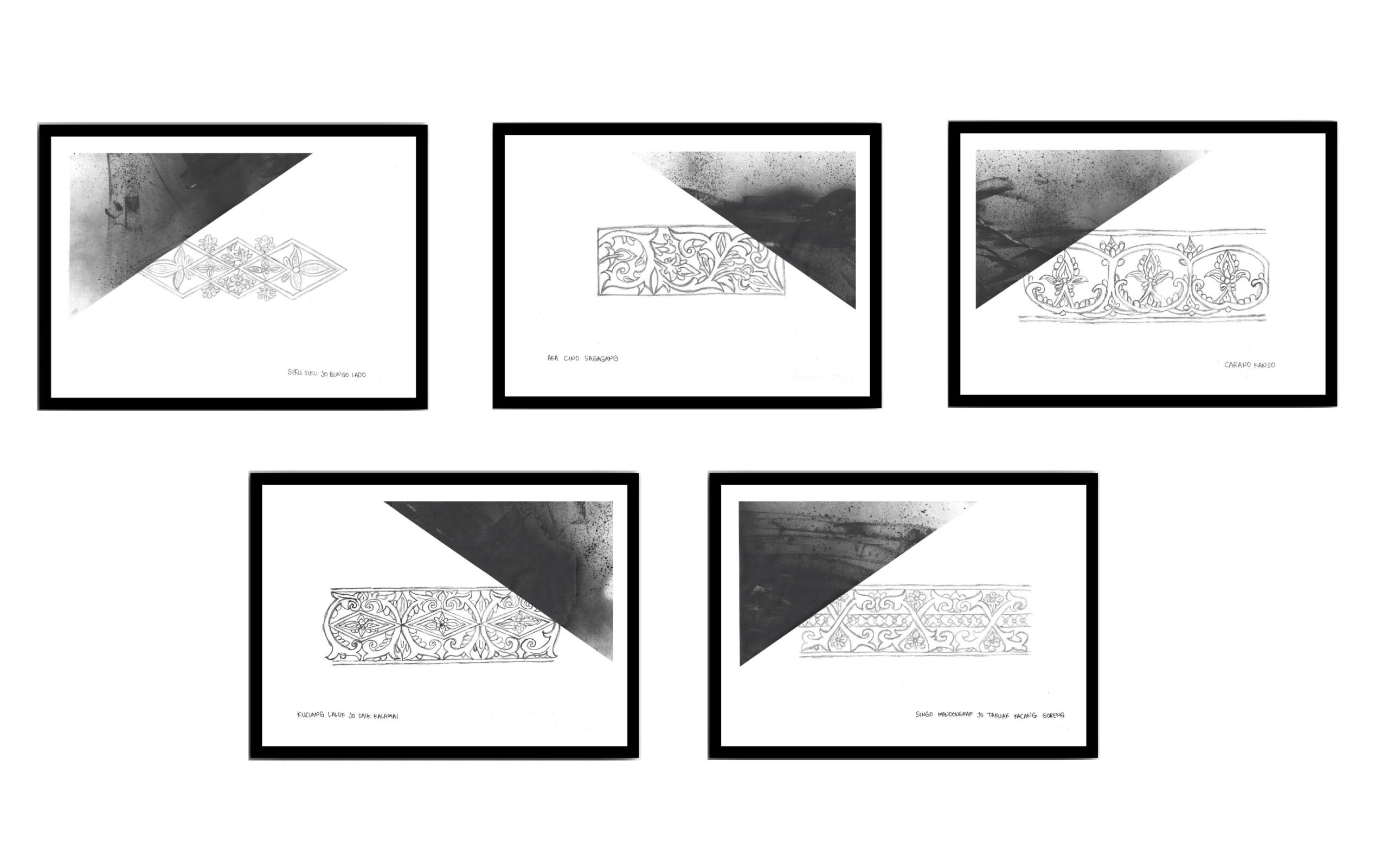
2023
“Ukiran Gadang,” which means “big carvings” in the Minangkabau language, serves as a tribute to the community, carrying forward its historical and cultural significance into contemporary practice.
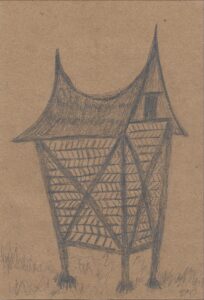
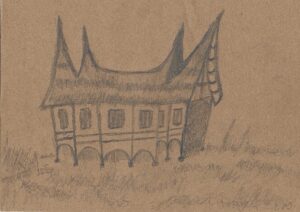
NFT and Heritage Preservation on Rumah Gadang
This interpretation is looking in both directions; through this series, the images are deformed into synesthesia and distortion, exploring the possibility of a new form and symbol identity and finding a new way to maximize the new and old space functions. Exploring the potential of digital technology as a method in artistic practice and expression, engaging both in the URL and IRL as an interdisciplinary approach between those fields.
The series is also minted as an open edition through Non-Fungible Token (NFT), bringing the heritage interpretation digital assets along with the Ethereum token that is printed together into each series as the identity of the artist, and then it finishes it with hand embroidery, meaning a connection and the protection of each object.
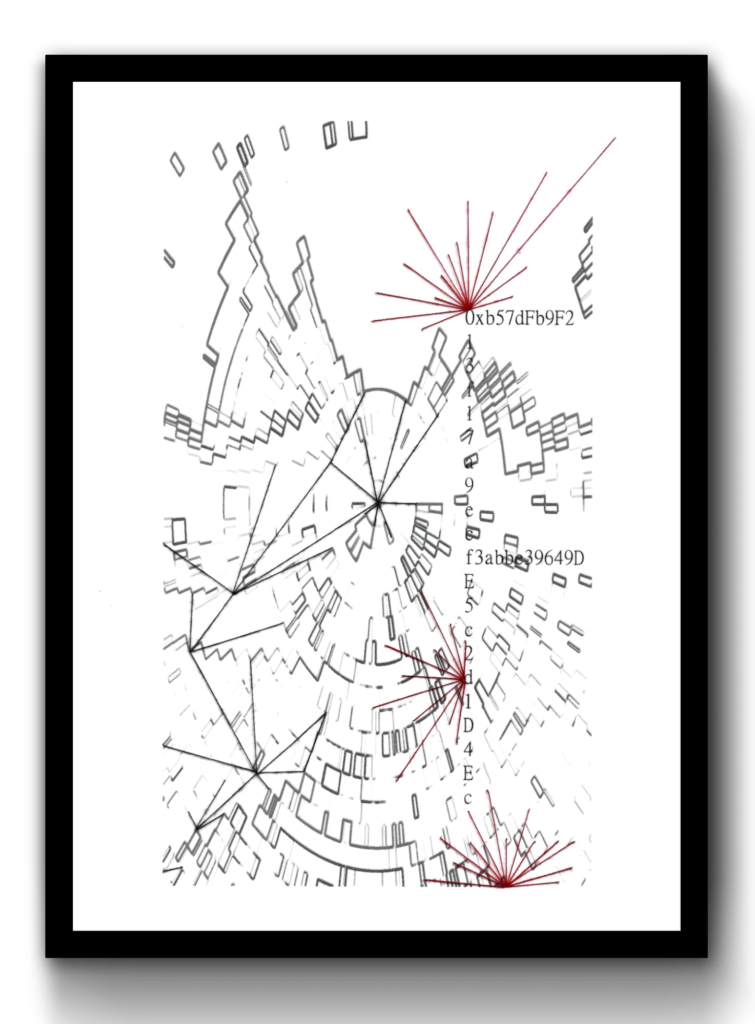
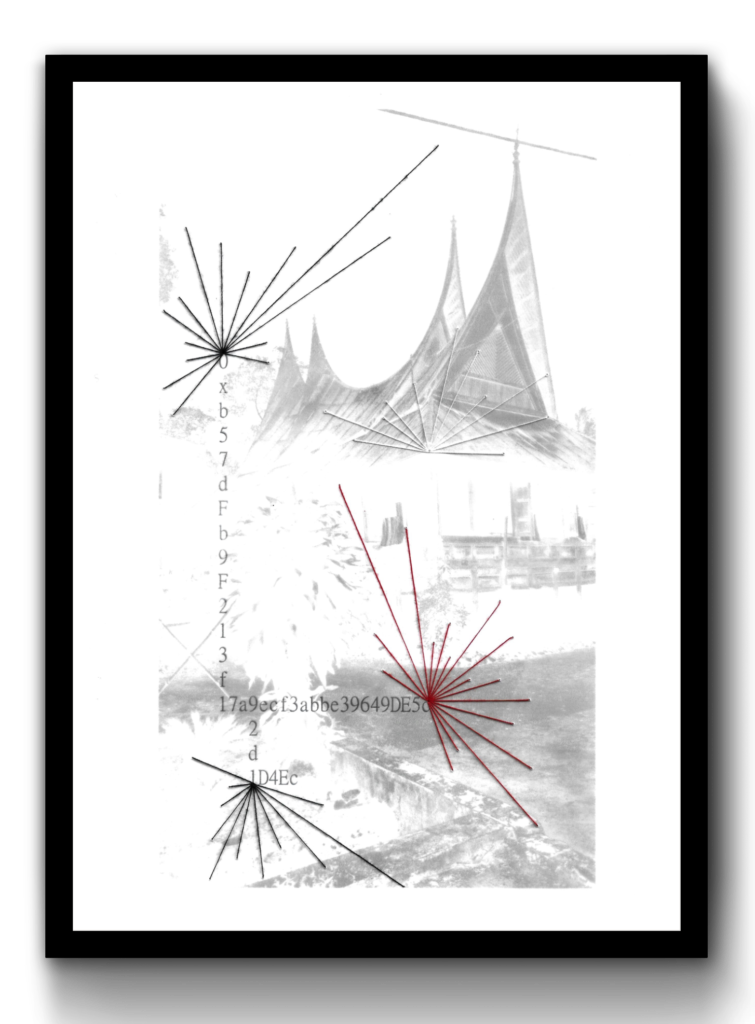
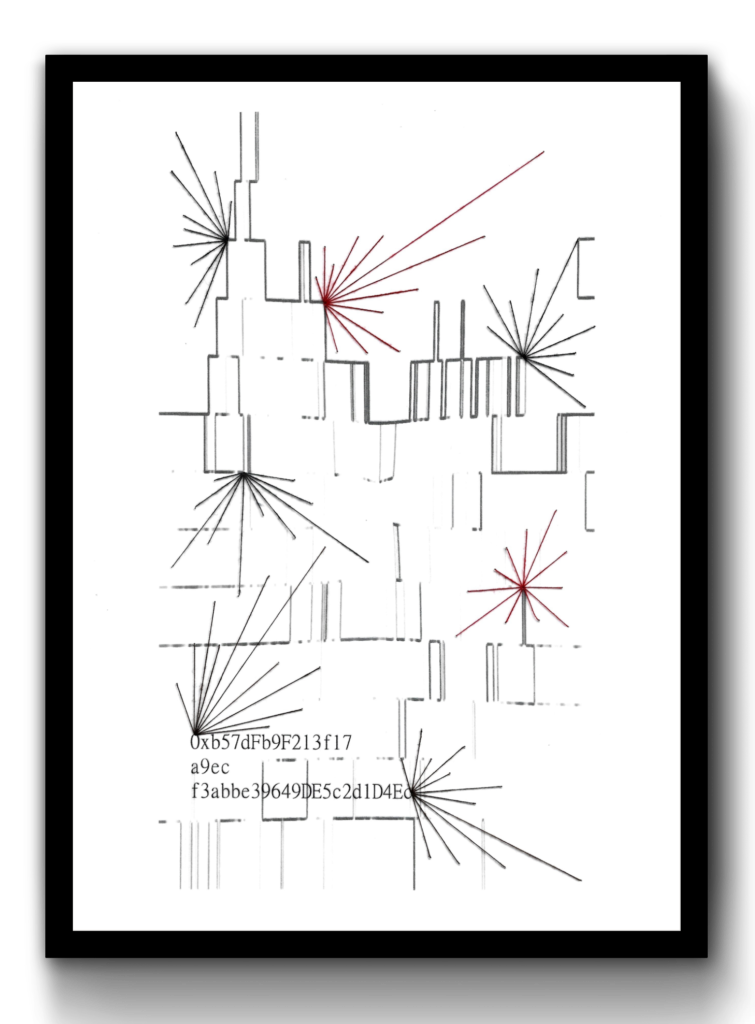
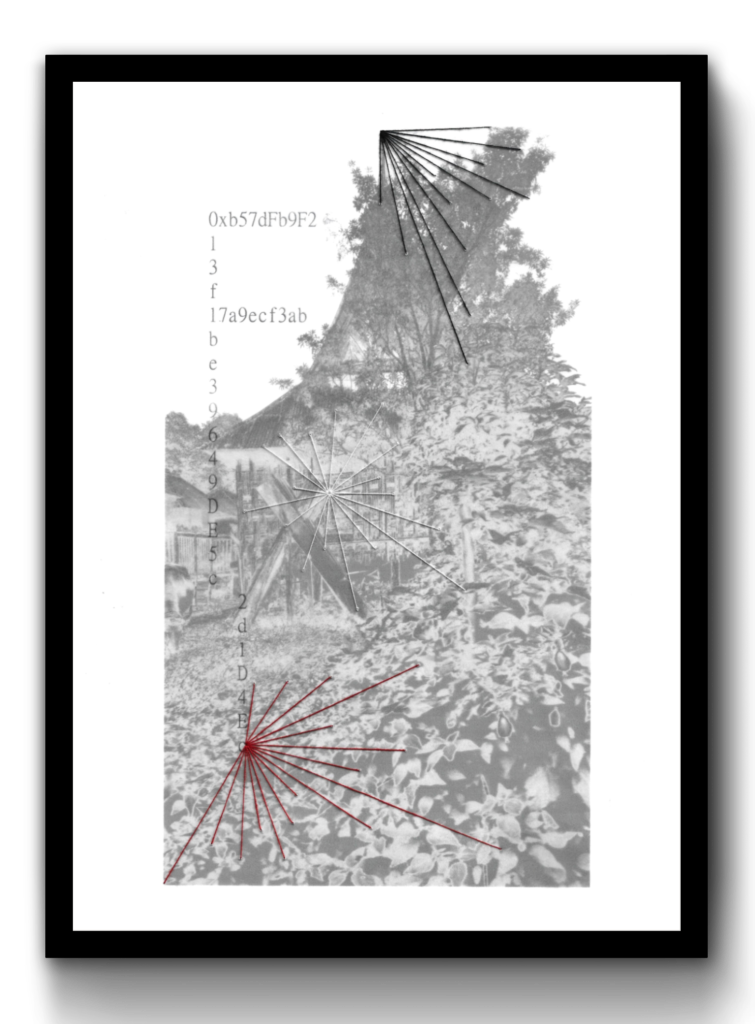
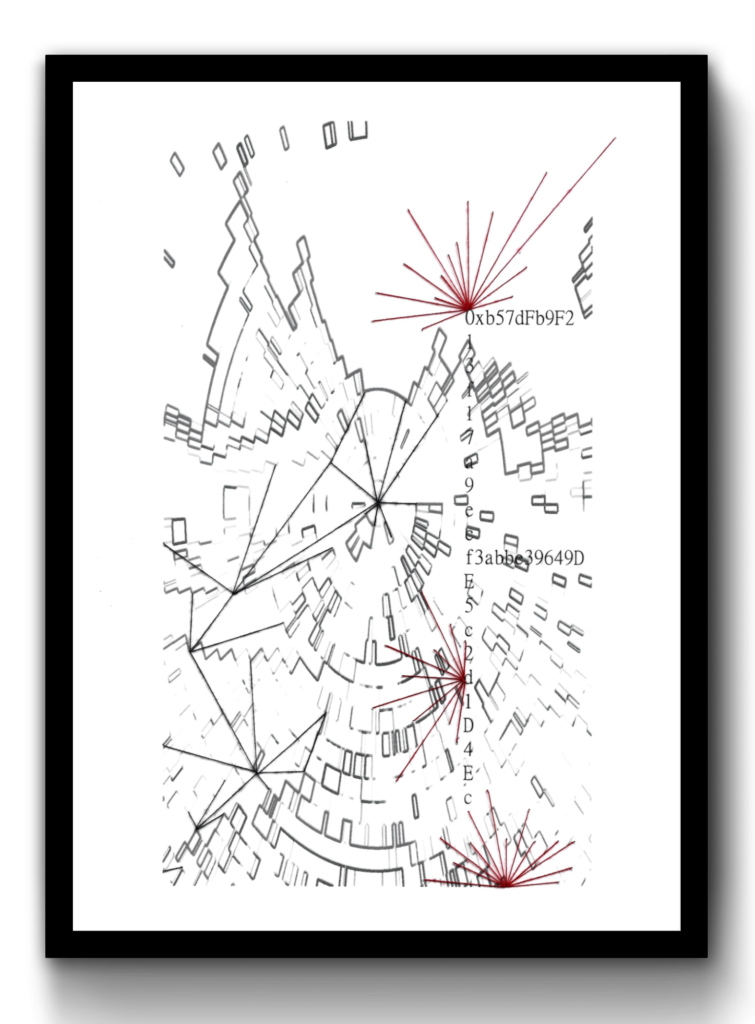
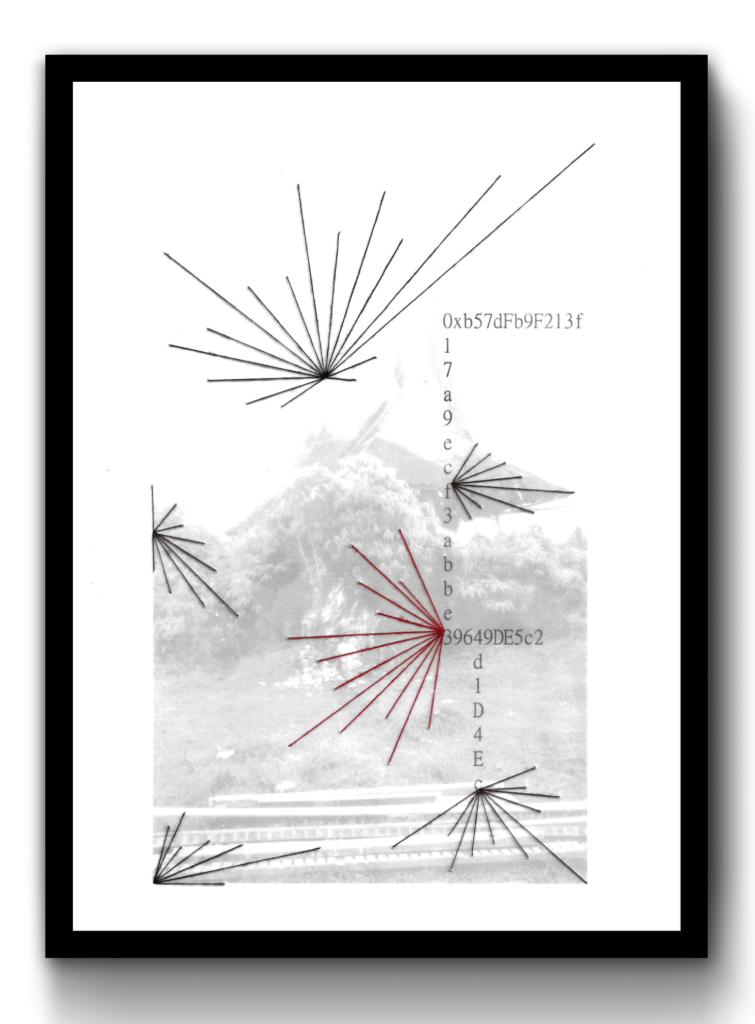
(Digital Photograph and Hand Embroidery)
“Susun Jari” Between Craft and Painting
Explore the embroidery techniques ‘sulam’ and ‘tenun’ from Minangkabau. Between space and identity approaches. The series consists of a mixing process where these old techniques are meticulously applied to canvas, creating a fusion of traditional craft and modern artistic expression.
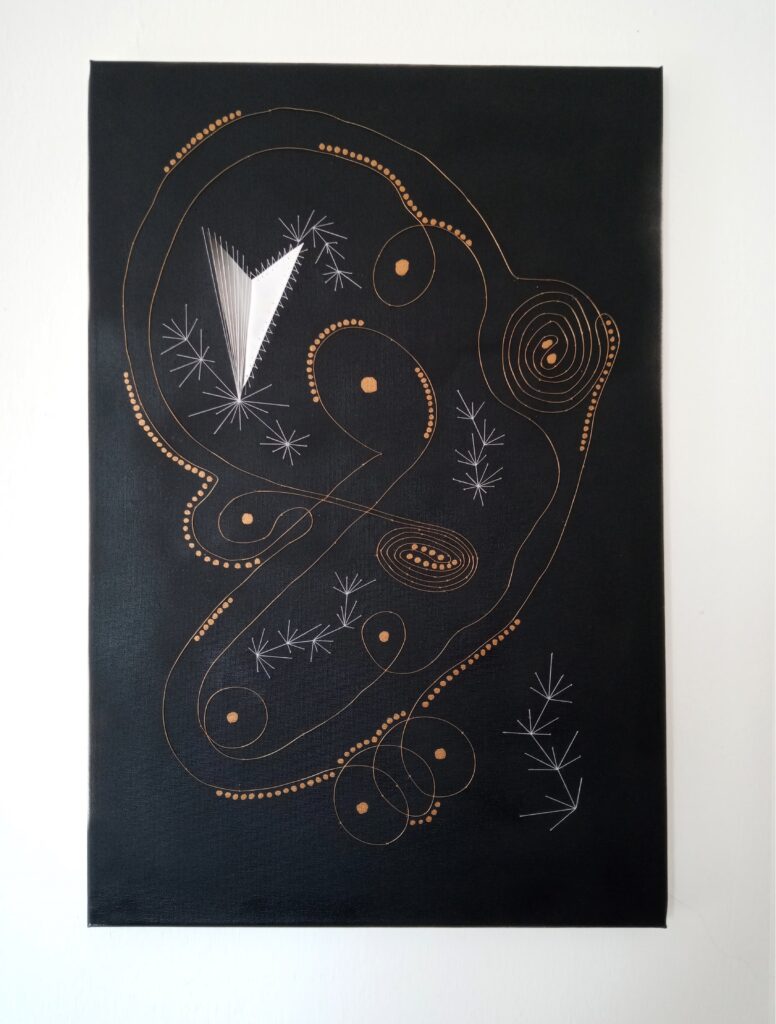
‘Sulam‘, a detailed embroidery technique, and ‘tenun‘, a weaving method, are both deeply rooted in Minangkabau culture. These techniques are traditionally used in textiles and carry significant cultural and historical value. In this series, the artist reimagines these methods, using them to narrate stories of space and identities, particularly focusing on the Minangkabau diaspora and their connection to their homeland.
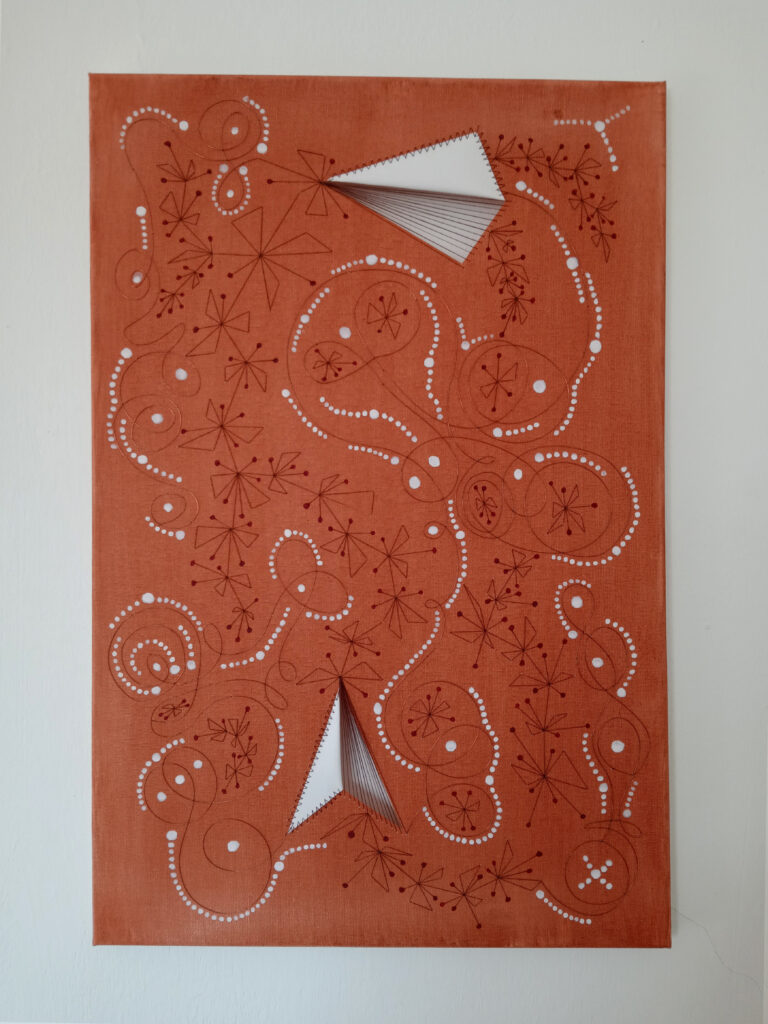
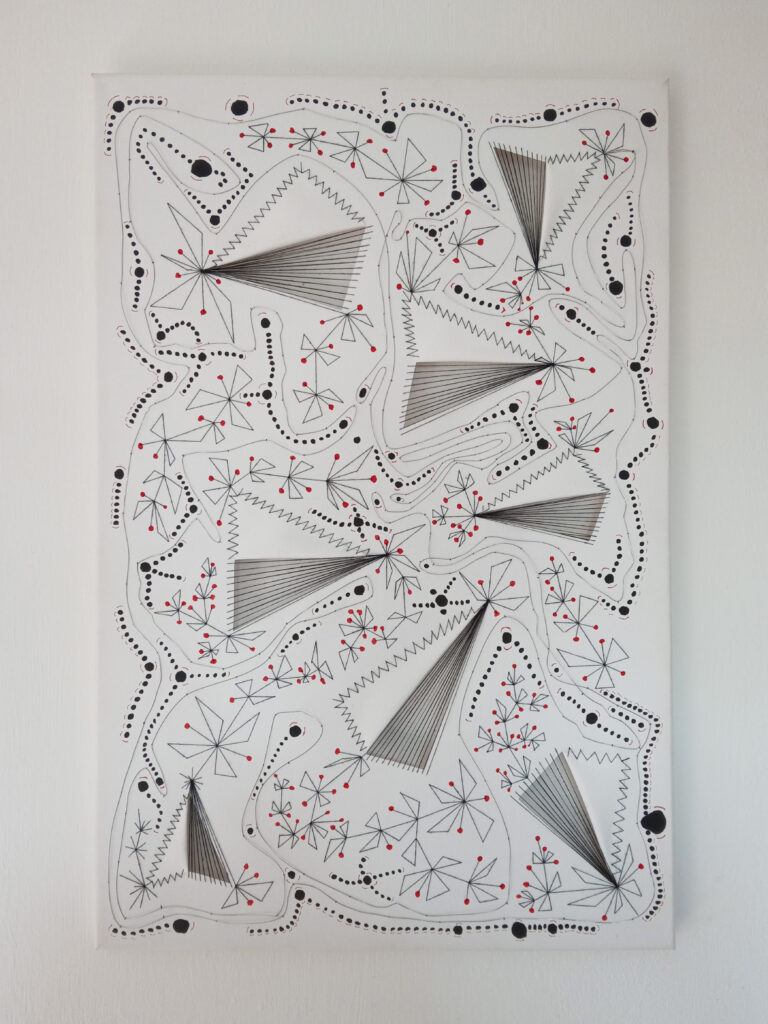
40x60cm each painting
Archive (Open Access API) Images generate from
Europeana Database Collection
